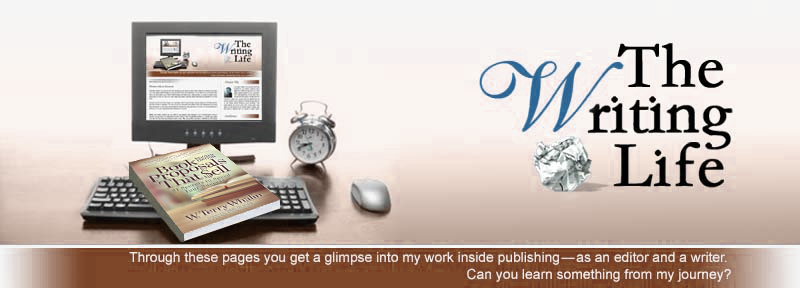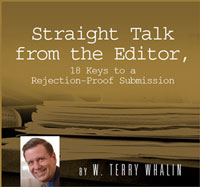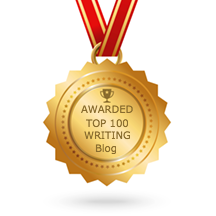Learn the Manuscript Submission Basics
 I've been in the publishing market for many years writing for the magazines as well as books. I assume that writers understand the basics of how to prepare their manuscript for submission to a literary agent or editor. To me it is something I do out of routine.
I've been in the publishing market for many years writing for the magazines as well as books. I assume that writers understand the basics of how to prepare their manuscript for submission to a literary agent or editor. To me it is something I do out of routine. In recent weeks, I've reviewed some proposals from writers who have missed some of these basics. I want to take a few words to cover some simple guidelines in this area. If you've been published many times, then I hope these basics will be good reminders. If you've never been published, then I hope that you will follow these basics because it will make your submission much more acceptable and increase the possibility that it will be read (which is the first step to getting a positive response).
Just imagine that you are the editor or agent. You are going through your physical mail or email. You open something and from a glance see that it is in the wrong format. You either delete it or mark it for rejection—and often ignore the idea.
Select a Serif Typeface
Everyone has the ability to use an unusual typeface for your manuscript. I have dozens of choices on my computer. When I am going to submit to a magazine, book publisher or editor, I do not use them. You do not want the publishing professional to focus on your typeface and say, “Boy, that is different.” Then they hit delete or reject. Instead you want this person to focus on the merits of your idea and your pitch. If you use a “different” typeface then you pull the focus into something which should be invisible.
Wikipedia has a good basic definition of san-serif type. If you have no idea what I'm talking about, then look at the link. You may have not noticed but the majority of books are using serif typefaces because reading studies have repeatedly shown that it's easier to read than a san serif typeface. You want your submission to be easy to read—especially to editors and agents.
I encourage you to select a typeface like New Times Roman or Georgia—anything normal. If you select something else, you will stick out—like a sore thumb—not likely your intention.
Double space
Like the typeface, a manuscript which is double spaced is easier to read—whether in paper format (printed) or on the screen. If the person receiving your submission has to double space your manuscript before they will read it (which I often do), then that is one more barrier that you've put up to the professional. It is one more risk for that person to delete it or reject it.
Write A Specific Person
I receive these packages on a regular basis. The outside is addressed with my name on it—yet when I pull out the submission, it is like the sender forgot my name. Instead they use the generic, “To Whom It May Concern” or “Dear Editor.”
With any type of submission, you are looking to start or build a relationship. If you use these generic salutations, it shows your lack of effort. You need to research ahead of time and address a specific person with your submission. It will help you fit in and not stand out in a negative fashion
Make It Perfect —Before Sending
I know you are eager to get your submission out into the market. Yet I encourage you to make it perfect—before sending it—whether on email or in the physical mail. Set it aside—even for an hour or better yet 24 hours. Then return to it with a fresh perspective and read it aloud. The ear is less forgiving than the eye and you will be able to see the errors in your submission. You do not want the publishing professional to be focused on your typos or poor grammar. Instead you want them to focus on your idea and pitch.
First impressions count when it comes to your manuscript. It is critical that you continue to submit and send out your material. Yet when you do it, give yourself the best possible opportunity for the person receiving to say, “Yes.” I hope these basics help you to have more acceptance in the days ahead.

Labels: acquisitions editor, literary agent, manuscript, typeface





















0 Comment:
Post a Comment
That's the writing life...
Back to the home page...